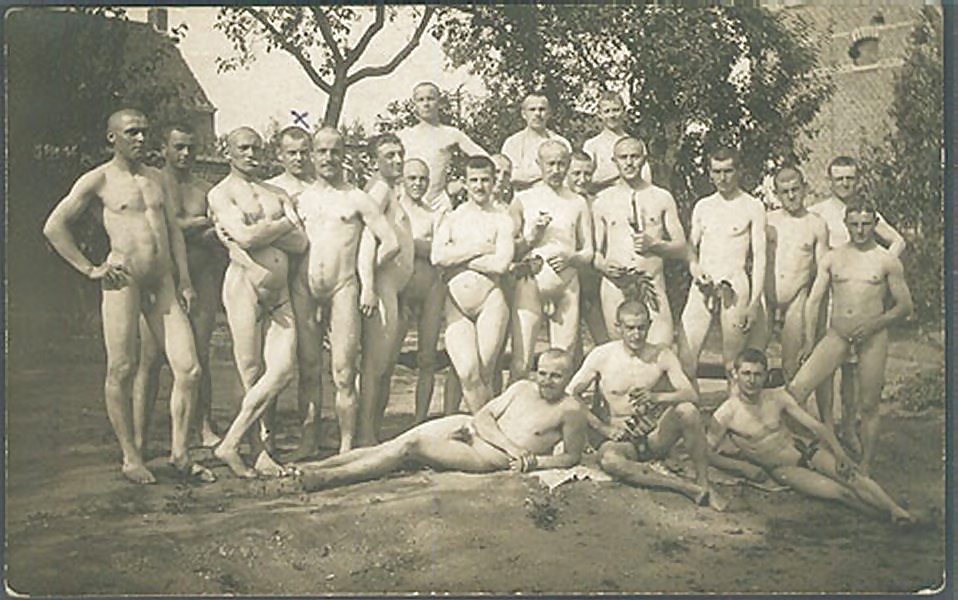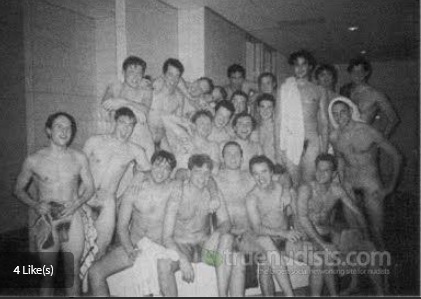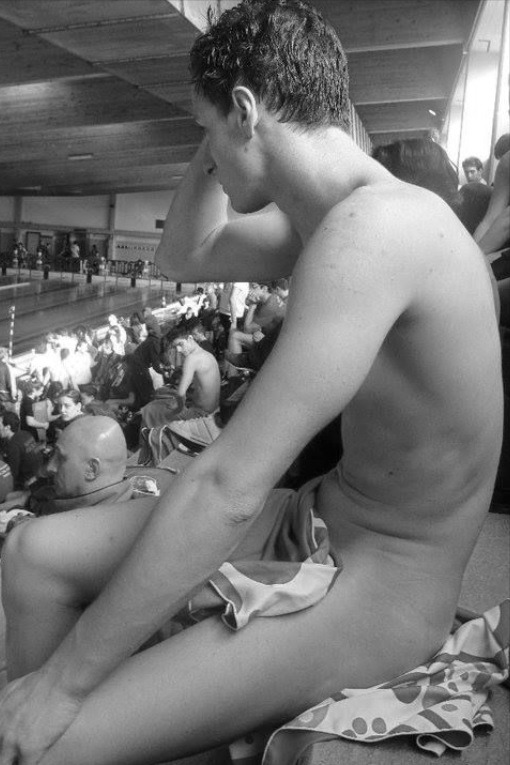Thoughts on Nude Male Swimming Images
Revised 7/30/23

As we consider and study the pictures of the era of organized nude male swimming, we should consider the implications from our vantage point late in the first quarter of the 21st century.
For one thing, we must acknowledge two elephants lurking in the room:
- As with all past events, they are not making any more images, we must make do with what has been already recorded.
- Those who participated in this practice are advanced in years, so their recollections and personal pictures (if any) are slipping away from us.
Let’s consider the iconic image of the New Trier High School water polo gym class from LIFE magazine in 1950 (image 29 of “The Good” posting). By my arithmetic, the youngest possible participant in the picture would now be in his mid 80’s. Similarly, the young boys frolicking in the equally well known 1940 LIFE image of the Boys’ Club pool in Providence, Rhode Island (images 13 and 14 of “The Good”) would be around 90. The older boys in the bleachers probably went off to fight World War II. The survivors of that group would be in their mid-to-late 90’s.
The upshot of these facts is that few if any of the participants in those scenes are still among us. Doubtless, most of them passed on without relating any of their nude swimming experiences in a recorded form. Indeed, the current strident reaction of society against child nudity would serve to incentivize their silence.
To bookend this discussion, consider that the last boy to swim nude in high school in this era probably stepped from the pool for the last time around the mid 1970’s. That person would be at least 60. Contemporaneous with him may have been a 6-8 year old learning to swim in a traditional YMCA and the college student (18-22 years old) availing himself of the suits optional open swim period on campus.
Having established the advanced age of the witnesses, consider what might have happened to their yearbooks, family albums and keepsake photos upon their demise or removal to a nursing home. Junked! The heirs would be intent on monetizing the house and its salable contents. These types of personal items would be consigned to the trash without a glance, probably not even offered at a garage sale. (Alternatively, the heir or the auctioneer might leaf through them, see pictures of naked boys, think “kiddie porn” and discreetly destroy them.)

Another fate befell some material: personal privacy issues. The (the very lengthy) item 13 in the Historical Resources is a case in point. Posting 3-2 is from a person who took swimming lessons as a boy in Florida in 1953. When he attempted to tell his story on a site, he was apparently swarmed by trolls (aka, the vermin of the internet) insisting that he was making it all up. Although he describes some tantalizing family album pictures, he declares that he will never share them. No doubt, his is not an isolated case. It’s true that the internet is not a warm, welcoming place. Putting any personal information out there can lead to (negative) life-changing consequences.
One my more discouraging finds was an old blog forum in which a correspondent asserted that when the YMCAs converted a family-friendly institutions, some Y’s destroyed photographic evidence of nude male swimming. I have no way of knowing how authoritative that statement is, but it has a chilling ring of truth.
Lastly, there was the problem of color transparencies (aka slides). Instead of print film, may people during the 1960’s and 70’s recorded their images in this medium. It was convenient for storage and displayed very well when projected, but the medium eventually went obsolete. Then the problem was how to preserve them. Most people opted for transferring them to DVD format. That automatically lost them to circulation on the internet. (Prints remained in hand, so they could be scanned.) Too, there was a cost for this conversion, so most people were judicious about choosing which treasured images to preserve. Since this occurred in the 1990’s, there may have been some reluctance to include images of juvenile nudity when society had become obsessed with child sexual abuse. Finally, there was the issue that color slides did not age well, so the images may have been deemed not worth saving. The inescapable conclusion is that nearly all of these were likely lost.
What’s the point? It is that those of us who collect and preserve the photographic evidence of this lost era may already have in hand all of the images that will ever be available to us. In that case, we should take stock.
My personal collection numbers around 450+ images, many of which are the fakes I have presented. Deducting these and other off-topic pictures, probably reduces that number to about 150 certifiably genuine images documenting this practice.
Looking at the bigger picture, I have been collecting these images for over a decade, but I have no sense of how many might ultimately exist in the organized nude male swimming universe. For one thing, I only search occasionally, yet new discoveries still pop up. My sense is that there is still a significant reservoir of images out there that are presently unknown to me.
There is evidence that significant amount of untapped material exists. As I mentioned in The Good posting, the on-line LIFE archives have not been thoroughly mined. Among the nearly 10 million unpublished photos, there are undoubtedly many that would interest us. A few of those were included in The Good and The Good Too postings.
Reference has also been made to the national YMCA archive with its 75,000+ images dating back to the Civil War era. The catalog of the Aquatics 1930-1970 section alludes to “nude swimming” among its contents. As noted, most of this archive is undigitized, so someone would have to present themselves physically to the University of Minnesota library and attempt to gain access. A tantalizing few pictures have made it onto the internet.
The good news is that since I started this website others have made me aware of more repositories of relevant photos. They are the digital archives held by universities, public libraries, historical societies and, one case, a state. The provenance of these images is not in doubt and their attributes (time and place) are readily accessible. However, each repository typically yields only a handful of usable images.
I continue count on readers of this blog to provide additional photographic data as time goes on.
